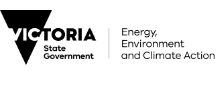In recent years, Victoria has seen extreme bushfires impacting state assets, biodiversity and local communities, causing impacts to regions in the state highlighting the need for further improvement on fire management strategies.
Site fuel hazard assessments are undertaken in Victoria using hazard classes for a small number of fuel strata (surface/near-surface, elevated and bark). The criteria for the hazard classes are defined in the Overall Fuel Hazard guide, however, there is a large amount of subjectivity in how different fuel attributes (e.g., height, density, % dead) combine to reach an overall hazard score. In addition, as the scales consist of a small number of categories, there is limited precision for documenting changes through space and time. Through technological developments in Terrestrial Laser Scanning (TLS), Victoria is looking to improve the ability for ongoing fire management and better informing emergency management project plans.
A recently completed Safer Together Project has developed a method to assess fuel hazards using 3D data captured from TLS. This technology represents unparalleled opportunities for the objective description of fuel structure, density and connectivity. The method was developed by RMIT University and the University of Tasmania and has been developed as a proof of concept, therefore requiring refinement to ensure its suitability for operational use. There is a clear need for an improved workflow to allow TLS fuel data to be collected and processed by non-specialist staff. The key to this is the automation of point cloud analysis.
This research project looks to build on existing research in leading 3D point cloud scanning technologies for the mapping of forest fuel hazard by utilising scanned data across the state and improving and automate data processing pipeline journeys for the display of TLS data on a bespoke end-user Point Cloud Processing Hub.
This project will present, in its Minimum Viable Product (MVP) state, the Hub for bushfire management experts in State Government to utilise scanned data aligned with decision making metrics. The hub will operationalise and streamline data pathways, making more informed decision possible for bushfire management.
Key outputs include:
- a report to determine the feasibility and accuracy of bark fuel hazard estimates derived from terrestrial Light Detection and Ranging (LiDAR) representations of forest structure
- a Python library that takes input TLS files and produces fuel hazard metrics
- a Point Cloud Processing Hub to provide the processing and visualisation of TLS data derived from forest floor fuel hazard mapping
- end-user support, including documentation on the use of the Python script and cloud-based software solutions, and workshops to train other fire agency staff in the use of the solutions.



